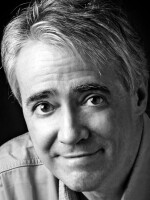SCOTT SIMON, HOST:
Kentucky Derby winner Mystik Dan will take the track this afternoon for the Preakness Stakes. He won the Kentucky Derby a couple of weeks ago in a photo finish. That wasn't the only close finish of the weekend. NASCAR cameras caught Kyle Larson's photo finish win at Kansas Speedway. Various officials there say the margin of victory - just one one-thousandth of a second. Jonathan Finn joins us. He's a professor of communication studies at Wilfrid Laurier University in Ontario. He wrote the book "Beyond The Finish Line: Images, Evidence, And The History Of The Photo-Finish." Thanks so much for being with us.
JONATHAN FINN: Yeah. Thank you very much for having me.
SIMON: I understand the Del Mar racetrack in Southern California has a role in the development of photo finishes.
FINN: Yeah. That's where it started, and it's a really fascinating story. So Bing Crosby, Bogart Rogers and William Lebron (ph) purchased the track at Del Mar in...
SIMON: I recognize one of those names. Go ahead.
FINN: Yeah, I usually say Bing Crosby and a couple of B-listers - purchased the track at Del Mar in 1937. And as part of their grand opening, they wanted the best possible technology in place, and so they got in touch with an optical engineer and asked him to develop something for the racetrack, which he did, and that was the slit camera, which became the first photo finish camera.
SIMON: Well, what difference did the - do we call it the slit camera, the slit aperture - make?
FINN: Yep, exactly. And that's the - that's what makes the photo finish the photo finish, that the aperture is a very, very tiny slit. So instead of a traditional photograph which captures a certain amount of space - right? - like, if you look at a photograph of a race finish, you might be seeing several hundred square meters of space. But a photo finish only captures typically only a few millimeters, but it captures everything as it's crossing the finish line.
SIMON: With respect to everybody that has to make hard practical decisions, are they just kidding themselves about the accuracy?
FINN: Once you get past about a hundredth of a second, the results tend to become pretty unreliable.
SIMON: What makes it unreliable? Is it just something like soil spilled on the screen, the positioning of the camera? What is it?
FINN: Yeah, so the first way it was explained to me was that once you get to about a - the thousandth of a second, what you could be measuring is the difference of thickness of paint on the pool walls...
SIMON: Oh, my word.
FINN: ...Rather than athlete performance. And if you're thinking about something like Preakness - so that - the determination there is the first part of the horse's nose. And this is going to sound a little silly, but what is the definition of a horse's nose? Depending on the positioning of the horse's head and whatnot, you might be getting into making determinations that your technology is far beyond.
SIMON: Wow.
FINN: Yeah. It's pretty interesting stuff. Not to mention the fact that you, like - we put so much emphasis on the finish line - right? - going down to millimeters - right? - or, like, you know, fractions of millimeters to make determinations, and yet there'd be considerable more variation than that at the start line.
SIMON: I'm just getting hold of that. Of course, there are differences at the start, and they're not accounted for at the finish line.
FINN: Yeah. One of my favorite ways with that is if you look at, like, canoe and kayak racing in the Olympics, and you see the boats at the start just kind of - particularly if it's choppy - just sort of floating up and down, and you can see the nose is kind of moving back and forth. And then it comes down to a photo finish where, you know, it's a hundredth or thousandth of a second. And you think, well, that person had - was 2 inches ahead of the other competitor at the start.
SIMON: I mean, are you suggesting that there ought to be more ties?
FINN: Yes (laughter). Absolutely. Obviously, there's reasons for there not to be ties. One of the chief among them is the financial stakes involved in any race. And this does actually happen. There are still all kinds of ties. There will be ties at the upcoming Paris Olympics, for sure. And in a lot of cases, it's because the athletes tie to the hundredth of a second.
SIMON: Well, I'm never betting another dollar on a horse race. Let me tell you.
FINN: (Laughter) Well, you can, but you'd also be able to dispute results if you lost, depending on the photo finish.
SIMON: Yeah. Oh, I - yes. It's been my experience, if you just go to a teller and say I'd like to dispute your result, they're very open (laughter). Jonathan Finn is a professor of communication studies at Wilfrid Laurier University in Waterloo, Ontario, and author of the book "Beyond The Finish Line." Thanks so much for being with us, sir.
FINN: You're very welcome. Thank you.
(SOUNDBITE OF SALIN'S "SI CHOMPHU") Transcript provided by NPR, Copyright NPR.
NPR transcripts are created on a rush deadline by an NPR contractor. This text may not be in its final form and may be updated or revised in the future. Accuracy and availability may vary. The authoritative record of NPR’s programming is the audio record.


